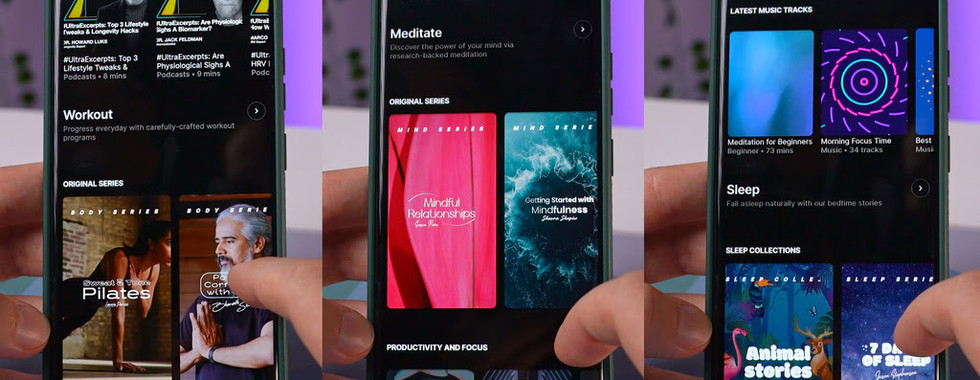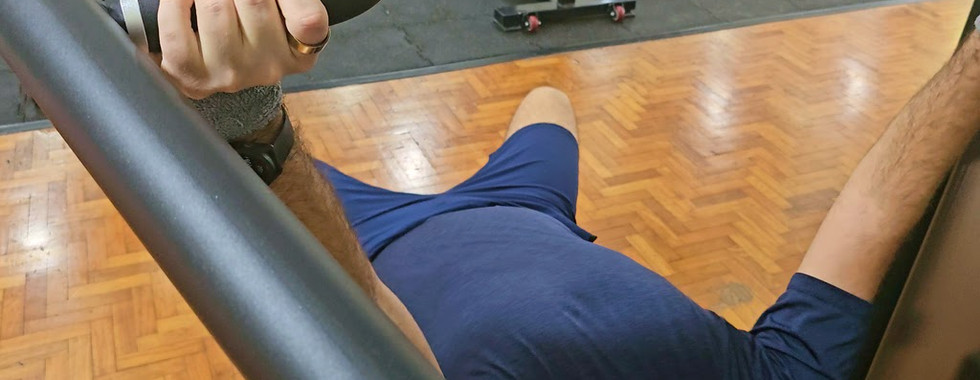Smart Ring vs. Smartwatch: Ultrahuman Ring Air In-Depth Review
- A2K
- Jan 26, 2024
- 6 min read
Today we're taking a closer look at the Ultrahuman Ring Air. We’ve been testing these two rings for a while now and wherever possible comparing them to our Garmin watch health trackers. Let’s do a deep dive into what we discovered and how we liked the smart rings in general.
Let's talk about what's on our hands, literally. I've been rocking the Bionic Gold version, size 10, going head-to-head with my Garmin Forerunner 265. Meanwhile, our editor was testing the Space Silver variant in combination with her Garmin Venu 2 Plus.
Before we get into the nitty-gritty, it's just fair to highlight the surprisingly lightweight design. If compared to our Garmin watches, which are noticeably bulkier, the Ultrahuman Ring Air offers a completely new form of health tracking, weighing approximately 2.4 - 3.6 g (depending on size) as a comparison my wedding band is almost 3 times heavier, so needless to say – we were eager to test them out.
Choosing the right size was a bit of a nail-biter. They send over this cool little box with all the sample rings to try on. They match the real rings in width and thickness, but I wish they made each ring the same weight as the corresponding real one for complete accuracy. We took several days to find the best fit, considering it's a bit more challenging here in Singapore. The climate here fluctuates between heat and humidity outdoors and dry, cooler temperatures indoors, causing our finger sizes to change. All in all, I think we found a good fit for both of us.
Alright, let's chat about the Ultrahuman Ring Air that's been on our radar – and our fingers – for the past couple of months. Clocking in at $349, this isn't your average daily purchase. But here’s the best part – there are no subscription fees. In a market where additional costs are almost the norm, it's refreshing to see a smart ring that doesn't require ongoing payments to access its full suite of features.
Let me go through all the pros and cons we discovered while using this ring daily for close to 2 months now.
Starting with the design - the ring is coated with a hard and durable Tungsten carbide coating on the outside and a smooth resin on the inside, which feels a bit weird at the beginning but we got used to it within a couple of days, and now the ring is so comfortable that for the most part we don’t even notice it, even the little protrusion on the inside is discreet enough not to bug me. However, we soon realised that wearing the ring during a heavy weight workout or carrying heavy metal objects is not advisable. It's not just about scuffing the ring, it can be a real pinch on the finger, too. Talking about scuffing, we were trying to keep it as true to life test as possible so didn’t really guard them and here is how they look after about 2 months of use.
Beyond its sleek design, the ring comes with quite a lot of different features, starting from sleep monitoring, movement index, cardiovascular fitness, skin temperature, heart rate, food macros and even workout mode, which is currently still in Beta. For me, the sleep tracking is a standout — it's pretty on par with what our Garmin watches offer, only with the ring, its compact size is a game changer. You get all that insight without the bulk of a watch.
Another feature that I found very useful was the weekly insights. After about two weeks of wearing the ring and once it calibrates to an individual’s body, you will start receiving these personalised weekly insights. It gives you things like Sleep Index trends (with further details on what has improved and what needs improvement), same goes for Recovery Index and Movement Index. It is basically like a birds-eye view on your overall health data.
One feature that we have underutilised is their expansive “Discover” section where they offer all sorts of beginner's guides, workouts, health podcasts, meditational resources, sleep collections and even music for various purposes, if you’re into things like that it’s surely a great source of wellness information for times when you feel motivated to do more.
The app itself offers plenty of motivational boosters, like the Smart Goals that you can find in the Home section or even direct chat with Performance Coaches. I have to admit though - I haven't exactly nailed all the Smart Goals myself. After trying for a few days, they kind of fell off my radar. But they might just be the thing to keep you on track.
I was happy to see how Ultrahuman constantly keeps adding new features left and right. Recently they added Ultrahuman X Store with newly launched Blackout Sleep Mask and now the latest addition is Pregnancy Insights where your health data gets translated through your pregnancy journey. It’s cool and innovative but please do take this information with a pinch of salt – always speak with a qualified doctor on any health-related questions you might have. Personally, I prefer using technology as an additional sensor and data collector to manage my health rather than drive it.
Having said that, the ring is not without its drawbacks. One of the first annoyances was the number of notifications you get bombarded with. It would be great to have more control over these alerts, to choose which ones to receive and which to silence. Muting the app entirely kind of defeats the purpose, as you miss out on a lot of its functionality. So being able to set personalised nudges would be a significant improvement.
One of such notifications is the low battery warning that gets triggered as soon as the battery reaches 30% and then it just keeps sending constant reminders throughout the day. Ideally it would be great for the ring to notify when it has under 1 day of battery life left and then maybe last 5 or 10% rather than every few % change while under 30%.
Additionally, in our samples the battery life varies between the gold and silver models. Check out this graph we've put together, tracking every charge since we began our tests. For the silver ring the charging was done more frequently roughly every 4 to 7 days mostly when it still had double digit battery remaining (this is due to the previously mentioned frequent low battery reminders that irritated our editor), for the gold ring the charging was done approximately every 7 to 9 days which is surprisingly good result. I usually waited for the battery to go below 10%. On December 21st we charged both rings at the same time for more accurate battery drain test and as expected, the silver ring charged faster but lasted two days less. If you look closely, the silver ring actually shows a degree of inconsistency in charging times, suggesting it might not be the best representative of the model.
Similar issue that happens only with the silver ring is detecting false naps. This happens during various inactive moments, like when working at a desk, watching TV or just having a peaceful chit-chat with friends. In the app it does let you correct the information when click “No” on the nap card, so it doesn't skew your data. And Ultrahuman representative has confirmed that they are currently actively working on reducing these false detections.
When it comes to exercise tracking, the rings require the phone to be nearby and unlocked, which isn't always practical or safe, especially in public spaces like gyms. It’s fine and feels comfortable enough for all the activities apart from lifting weights. Due to the slight bulkiness the ring gets painfully pressed into the skin so after a couple of tries, we started leaving the ring at home. We also tested it for swimming since it is rated as water resistant for up to 100m. The tracking there is pretty basic – you need to go to your timeline, tap Activity and search for swimming, it will prompt you to select start time and end time and will track only heartrate. In comparison Garmin tracks all these stats and more. So overall for activities we would not consider replacing our Garmin watches. Let us know in the comments below – can you think of an activity where a smart ring would be a better choice than a smartwatch?
After wearing the ring daily for a month, I noticed a reaction on my skin. So I moved it to my index finger, hoping for a change. About a month in, the skin under the ring started feeling rough again and even began to split a bit. It seems like this might be from the skin drying out under the ring. We were advised to keep the hands moisturized and to make sure the finger is dry before wearing the ring. Some people's skin might also react to wearing anything for too long, so in my case frequent finger swapping has helped.
So when weighing in all its pros and cons, it's clear that this smart ring is a significant player in the health tech arena. The absence of subscription fees, combined with its advanced features makes it a compelling choice for those seeking a detailed and convenient health tracker.
Naturally like with any product there are some drawbacks, like the frequent and somewhat overwhelming notifications, and the limitations in exercise tracking that are some points to consider. However, I feel the continuous updates and additions to its features showcase the brand's commitment to innovation and improving user experience.
What's your take on smart rings versus smartwatches for health tracking? Do you see the Ultrahuman Ring Air as a game changer, or would you stick with more traditional devices like smart watches? Share your thoughts in the comments below!
























































































